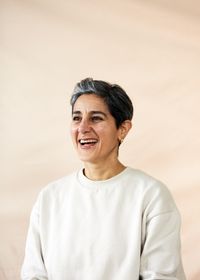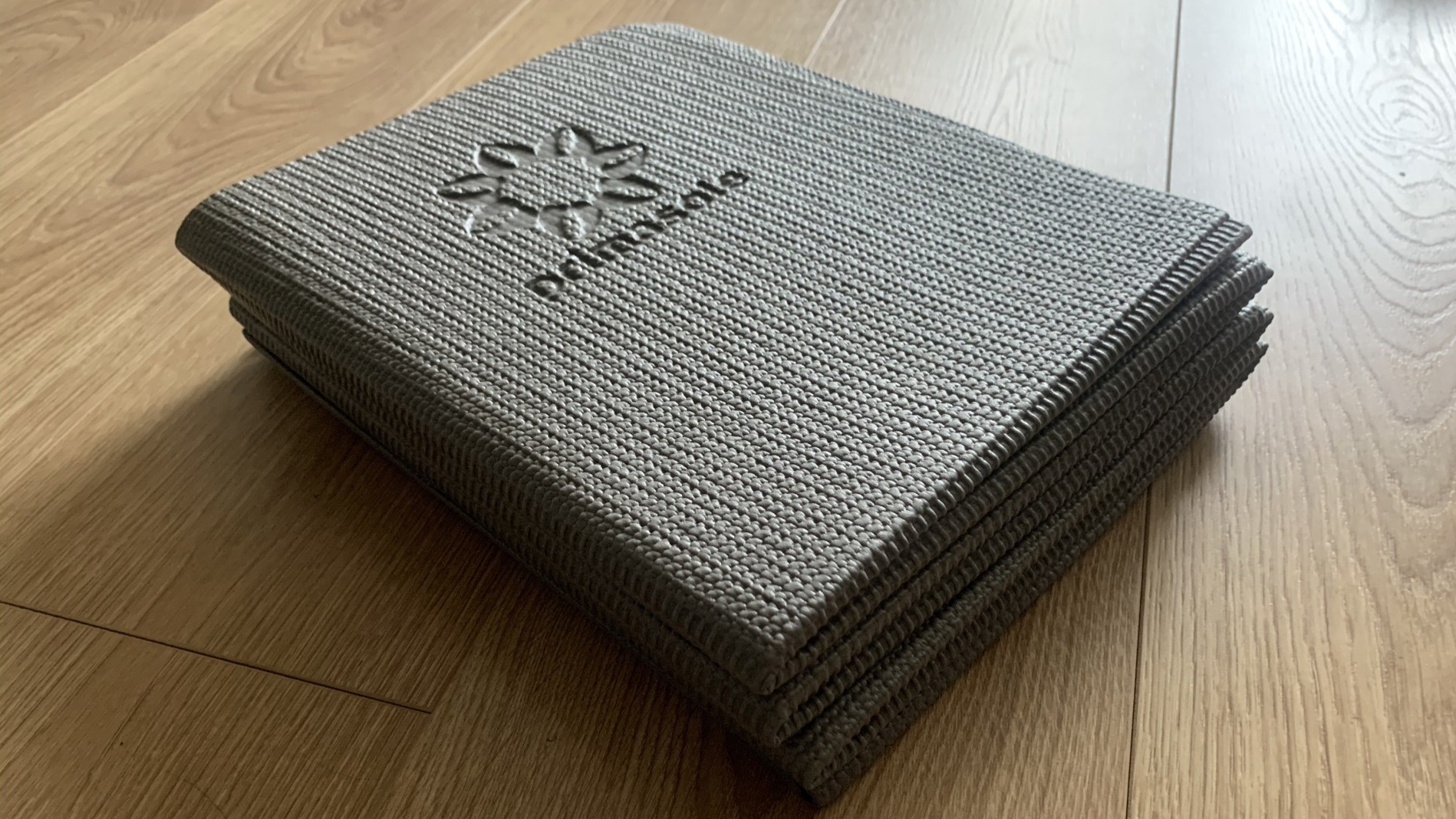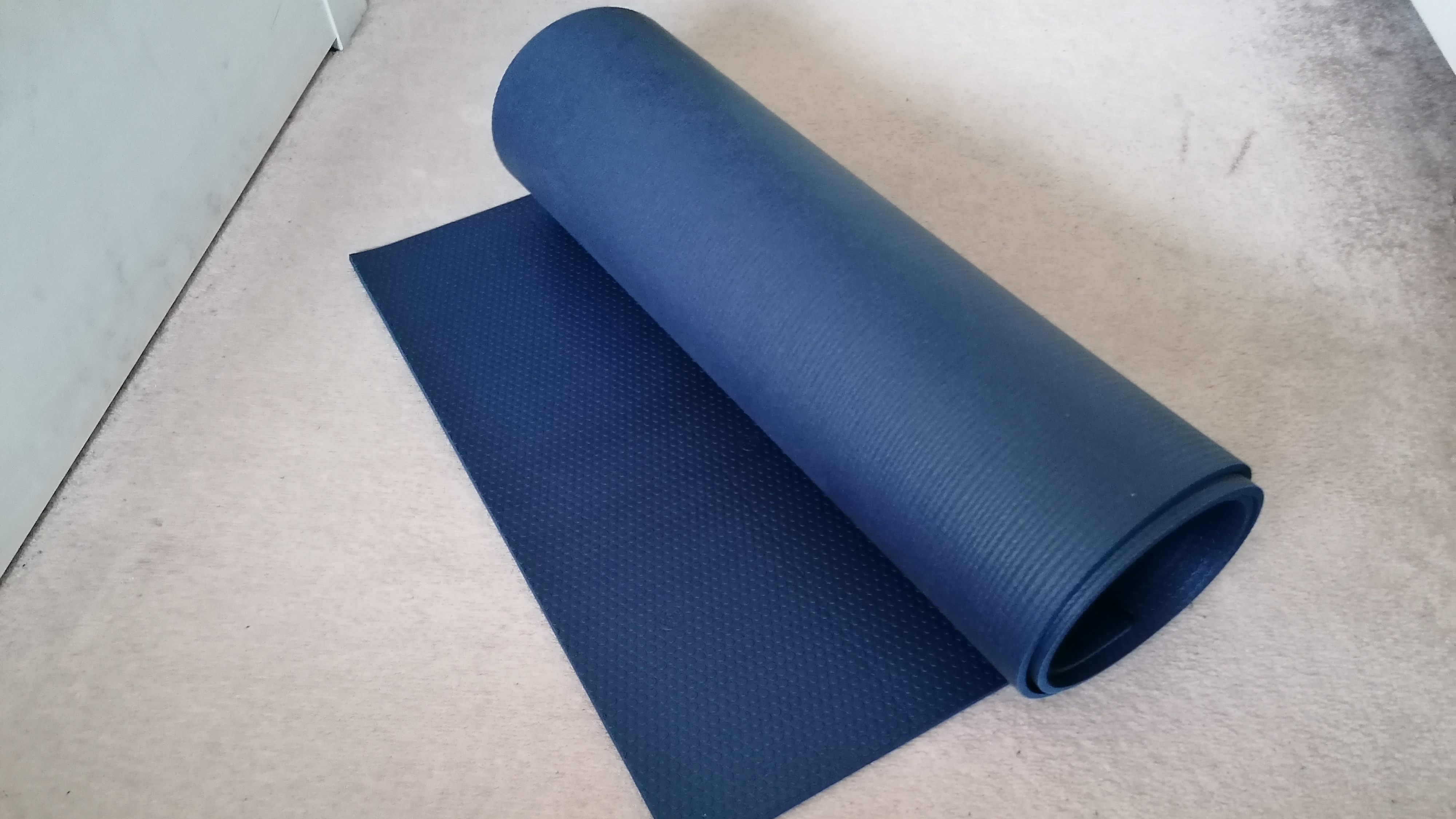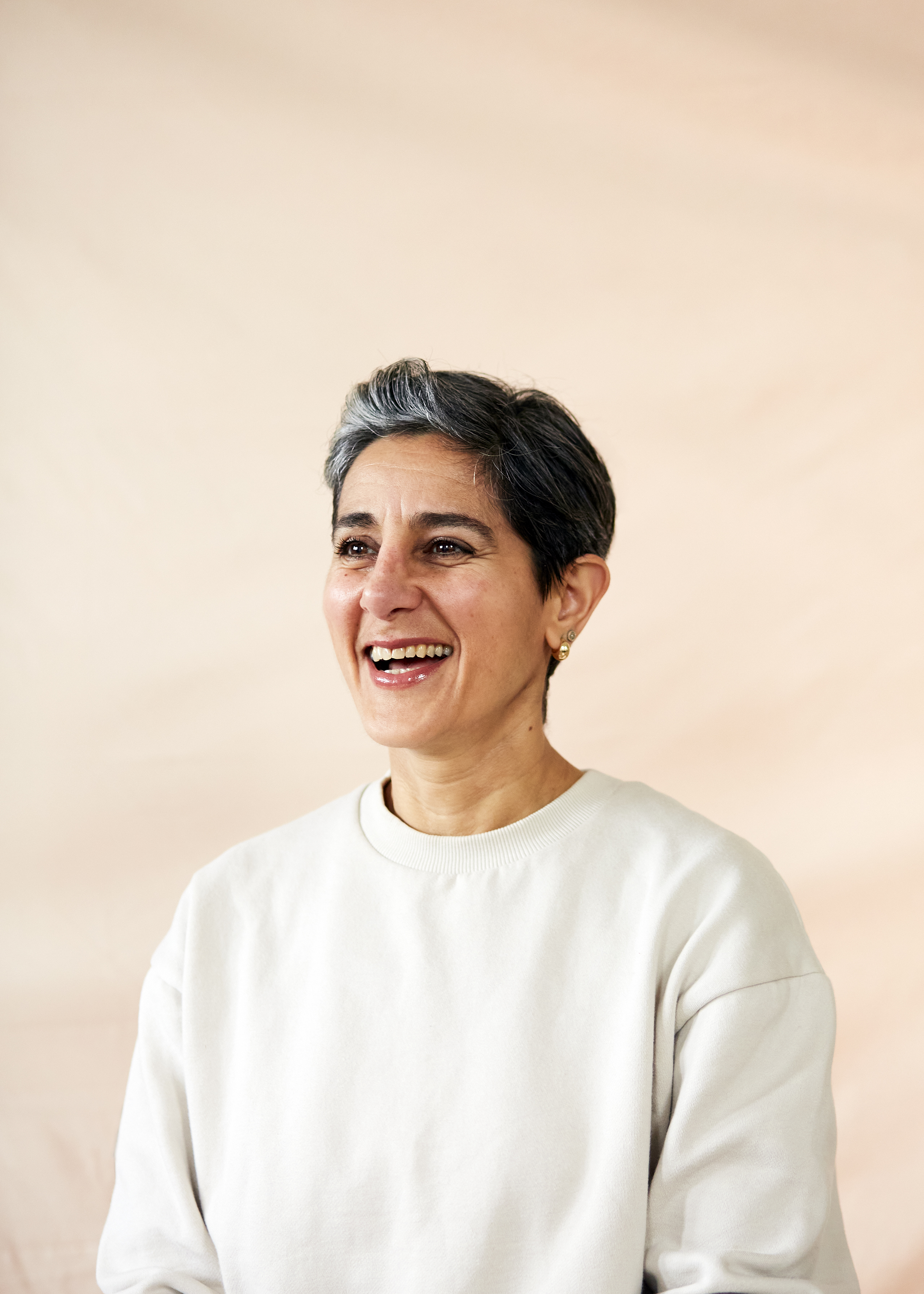The six best yoga mats of 2024, according to a yoga teacher
Whether you're just starting, are a fan of hot yoga, or like working out, we've tried the best yoga mats for all uses


Choosing a yoga mat that delivers what you need is no mean feat. As a fitness editor, 20-year yoga practitioner and now a yoga therapist and teacher, I know there are more yoga mats to choose from than yoga styles!
In my opinion, your mat should be a joy to step onto every time you practice. Of course, a decent grip, support for your joints and staying power for your flow are a must, too. Your choice should be guided by your practice style—are dynamic moves more your jam or do you prefer to wind down with yin? Other considerations include budget, materials, thickness and dimensions for your needs, and maybe even your values will come into play.
If that sounds daunting, let me help you choose the best yoga mat for you. My research analyzed materials and specs, testing each mat with a comprehensive yoga asana (postures) routine and judging it against criteria covering performance, practicality and design.

Yanar Alkayat is a health and fitness editor and Fit&Well contributor. She founded Yanar Mind & Movement to offer holistic wellbeing through one-to-one yoga therapy, chair yoga for movement disorders, yoga nidra, and personalized functional fitness.
The best yoga mats you can buy right now
1. The best yoga mat overall


Liforme Yoga Mat
Our expert review:
Specifications
Reasons to buy
Reasons to avoid
Buy it if
✅ You like an alignment guide: the helpful alignment lines are offered in an range of colors and designs meaning you can match a mat to your home style.
✅ You do a dynamic practice: the moisture-absorbing upper gives this mat a fantastic grip, meaning it’s suitable for faster-paced and dynamic styles without compromising on cushioning and comfort.
✅ You want to take your mat out: the sturdy zip-up case with handles scored this mat extra points. If 2.5kg sounds like a lot to lug around, it’s on par with or lighter than other natural rubber mats on the market.
Don't buy it if
❌ You want to avoid all synthetic materials: Polyurethane is touted as eco because it’s recyclable but it’s still synthetically made using petroleum-based materials. Not to say that’s a bad thing—it’s what gives it the stellar grip—but worth noting if you want a 100% natural mat.
❌ You’re on a tight budget: the price tag may not be suitable for all yogis but it’s possible to find natural rubber mats with alignment guides at more affordable prices.
❌ You do hot yoga in a studio: while the open-cell surface structure absorbs sweat and gives the mat a sticky grip, taking it for regular hot yoga classes can reduce its lifespan.
If alignment is a priority in your practice then look no further. This smooth, grippy mat from Liforme comes in different colors and yogi-inspired designs helping you flow through your physical practice like a pro. Innovative materials that don’t compromise on comfort will appeal to those seeking some sustainability points.
Performance: This mat boasts an undeniably good grip without compromising cushioning, which somewhat justifies the price tag. No matter how rapidly I moved from downward dog to cobra, my hands and feet felt strong, safe and comfortable. Bonus points awarded for rolling out flat onto the floor with no curling edges.
The sleek, smooth yet grippy surface is thanks to the polyurethane upper layer, which although not a natural material, is still considered sustainable as it’s expected to break down in landfill conditions between one to five years, according to Liforme. The natural rubber base keeps it secure on the floor.
The mat’s top layer has an open-cell structure, which means moisture is absorbed and can evaporate, helping you maintain your grip and steadiness. This makes it suitable for intense practices but there is a note in the FAQs saying it’s not specifically designed for hot yoga. Liforme says the heat may speed up degradation and reduce the mat’s lifespan.
Design: All mats feature an attractive and comprehensive set of lines that the brand says are suitable for different body shapes and sizes. At 2.5kg it’s lighter than other rubber mats I’ve tried, making it more suitable for home and away.
I found the vertical line down the middle an excellent focus point for my favorite balancing postures, warrior three, half moon and revolved half moon. The horizontal lines offer options for moves such as downward-facing dog and the 45° line is designed for warrior one.
I don’t believe this prescriptive model is for everyone but if you’re new to yoga asana or happy to have a helping hand in positioning, this mat is recommended.
Care: Use a mat cleaner on a soft damp sponge and apply evenly across the whole mat. Follow with a wipe-down using a clean damp sponge. Don’t worry about the moisture marks, they’ll dry out.
2. The best yoga mat for workouts


Lululemon workout mat
Our expert review:
Specifications
Buy it if
✅ You love HIIT, yoga and weight training: The mat ticks all the boxes and was very reliable underfoot whether I was in cross-training shoes or barefoot for mobility work and yoga.
✅ You want a sticky grip: The grip is excellent, particularly for barefoot work, as long as you don’t mind that tacky sound when hands or feet come off the mat.
✅ You want a light-ish mat: At 2kg this is roughly half the weight of rubber mats.
Don't buy it if
❌ You do a lot of balancing work: The textured design was a little distracting for some balancing poses so I wouldn’t recommend it if your asana practice needs visual focus.
❌ You’re fussy about natural materials: if you’re shopping for a natural mat this isn’t it. However, the materials are recycled so they score sustainability points in a different way.
Lululemon's Workout Mat lives up to its name as a great hybrid mat. It excelled during testing, providing grip and stability for barefoot work and didn’t budge from the floor during fast-paced workouts. The closed-cell technology withstands sweat, dirt and stains. While I wouldn’t call it stylish, it’s brilliantly functional and strikes a good balance between comfort and stability with unparalleled grip.
Performance: This mat screams versatility. It stands out as an all-in-one mat that has you covered for high-intensity, weights, bodyweight and yoga sessions. The springy padding lends you comfort while the sticky upper provides stellar grip.
It’s a grippy mat that makes a tacky sound whenever you peel off your hands and feet. But when I planted my feet into the floor for heavy single-leg squats and lunges, the mat didn’t budge and I was grateful for that stickiness. That grip quality also meant I moved through fast burpees and a fluid sun salutation without any slippage. The mat also impressively grips to the ground so you can rest assured your HIIT workout will be safe and secure.
The 6mm cushioning had a luscious spring to it without compromising on sturdiness which is no mean feat for a mat. The closed-cell technology means it will withstand sweat from hot palms without building up bacteria and odor.
After teaching a chair yoga class, the dents left behind from the chair legs disappeared within an hour, scoring the mat extra points for durability.
Design: Brownie points to Lululemon for using polyvinyl butyral—a tough, flexible resin recycled from windshields that would otherwise end up as waste—in the mat’s top and bottom layers. The middle part is thermoplastic elastomer (TPE) commonly used in yoga mats for its flexibility. However, some eco-conscious pros regard it as undesirable due to its resource-intensive plastic and rubber components. These details are perhaps only relevant if your purchasing priority is your environmental footprint.
I tested the Workout Mat in ‘oasis blue’, which isn’t astheically to my taste but it also comes in black. It lacks a premium look and feel but if performance is your priority then you might be happy to overlook this.
There’s a raised textured pattern across nearly the whole mat (apart from a circular space in the center), which, while designed for maximum traction, was visually distracting when doing balancing poses such as Warrior 3.
In terms of weight, some customers and reviewers mentioned it’s not a light enough to carry around but at 4.4lbs/2kg it’s around half the weight or more of a standard rubber mat.
My only gripe with the design is that it sometimes rolls up slightly at the ends due to its light weight (scroll through my pics above to see this). This looked untidy but could also be a trip hazard. When I left the mat unrolled for a few weeks, this did eventually disappear.
Care While it picks up dirt and dust easily (maybe my wooden floor boards are to blame), the mat is very easy to clean with a spritz of gentle cleaner on a damp cloth. It's also easy to hold up and shake out as it’s light.
3. The best budget yoga mat

Specifications
Reasons to buy
Reasons to avoid
If you're often on the go, it's not practical to keep a full-size mat with you. That's where the Primasole Folding Yoga Mat comes in. It folds neatly into a square, so it's easy to pack into your case or fit into a day bag.
Its PVC material means that it's easy to wipe down, so you can keep it looking fresh, and there are nine colors to choose from. It's a nice length at 68 inches, but its 24-inch width meant we had to readjust during warrior poses to make sure we stayed on the mat.
We will admit that it feels a little thinner than most mats and, when unfolded, it retains its creases, which can get underfoot when you're transitioning between poses. But it's a great pick for a beginner who needs something cheap and simple.
We found it stuck really nicely to wooden and tiled floors though, without any slippage, which is a plus if you plan on practicing at home or in studios. [Reviewed by Sam Hopes]
- Read our full Primasole Folding Yoga Mat review
4. The best portable yoga mat

Specifications
Reasons to buy
Reasons to avoid
The Jade Yoga Travel Mat is an excellent option for when you're away from home. It's lightweight — just 2.9lbs — and the 3.2mm mat can be rolled or folded without impacting your yoga surface.
It's on the thinner side, and we did find that you could feel the ground during some poses, so if you're a beginner or have sore joints, then you'll want a thicker mat, like the Manduka PROlite Yoga Mat, although that is less portable.
We found the supportive rubber surface prevented slipping and improved our grip, while the open-cell construction meant that the mat readily absorbed sweat, but when our palms were sweaty, it was hard to stay in control during complex moves like handstands. [Reviewed by Maddy Biddulph]
- Read our full Jade Yoga Travel Mat review
5. The best eco-friendly yoga mat

Specifications
Reasons to buy
Reasons to avoid
The Yoga Bare Wild Paws mat is one of the best eco-friendly yoga mats, made from natural rubber and polyurethane. The four colored mats are designed with plant-based dyes, and the company uses laser etching for the on-mat patterns.
This laser etching also includes a line down the center of the mat to help you with your alignment, which isn't a common feature on many yoga mats. We were also impressed with the 'extreme grip' surface, which helps us stay firmly in place.
Because it's relatively heavy (5.5lbs) it's not the most convenient option for taking to a studio, but it rolls up neatly for when you do need to carry it. However, it's a great at-home option, as we found it wasn't too cushioned to double as a workout mat.
We did find that the mat's surface could get a bit grubby, with visible dirt and makeup marks. But a quick wipe down with a mix of lemon juice and warm water fixed it up again. [Reviewed by Jessica Downey]
- Read our full Yogi Bare Wild Paws Yoga Mat review
6. The best large yoga mat

Specifications
Reasons to buy
Reasons to avoid
The Manduka PROlite mat is larger than many others — longer and wider — and available is a range of colors, from vivid orange and yellow, though to darker blues, greys, and blacks.
It's made from PVC, so it's a good option if you're allergic to rubber, and we liked the cushioned, padded feeling under our feet during our practice; it's easy to forget there's just 4.7mm of mat between you and the hard floor.
The mat has a closed-cell construction, making it fairly resistant to sweat, moisture, and dust, though it'll still need a regular clean. However, we found this was pretty quick, as all it needed was a quick wipe with a damp cloth after a class.
However, it doesn't come with a carry bag or straps, and because of its larger size, we found it wasn't very practical to take with us to studio classes, so this mat is best suited to home practice instead. [Reviewed by Mina Frost]
- Read our full Manduka PROlite Yoga Mat review
How we test the best yoga mats
Yoga mats in stores are often stored in boxes or wrapped in packaging, so it's hard to get a sense of what a mat is really like to use. That's why we test the yoga mats we include in this guide, so you know which is best for beginners and which is suited to travel.
We consider the types of materials — questioning whether its made from PVC or natural rubber and if its suitable for anyone with a latex allergy. Many yoga mat brands talk up their eco-friendly credentials, which is why we also pay attention to the type of packaging involved and if its readily recyclable.
The size and weight of the mat are also important, as you probably won't want to carry a large, heavy mat to your local studio, but may find an extra-wide mat is fine for at-home practice.
We use the mats for our own yoga practice, trialing them across a variety of styles, including Hatha, Yin, and Vinyasa. Plus we test them for other activities, like Pilates or high-intensity home workouts to see if they support a range of exercise styles.
How to choose the best yoga mat for you
Trying to nail full wheel when your mat is sliding from underneath your palms is not only frustrating but could also end in injury, so it’s crucial to align your mat to your practice.
The main factor to consider is material. Polymer plastic is widely used because of its brilliant grip factor, and polyurethane is often added to the top layers of yoga mats for this very reason — a firm favorite amongst hot yoga lovers.
Natural tree rubber and PVC are also widely used in mats; rubber and PVC tend to be less environmentally friendly than cork, but are also more durable and less likely to be thrown away.
We spoke to Emma Henry, Director at Triyoga, for some top advice on finding and maintaining your yoga mat.
“There are so many things to think about,” says Henry. “Like how ethical and eco-friendly the company is, the life expectancy of the mat, and whether the mat is for home practice or lugging around town.
"More general yoga mats are good for beginners and all practices, but if you know what style you like and what suits your practice best, then find a mat that is specifically designed to cater to that to get the most out of your mat,” she recommends.
“I always look for a mat with good grip,” Henry explains. “There is nothing worse than sliding around on your mat, especially if you like a dynamic practice. If you prefer a floor-based practice, where comfort and support are more important than grip, then a thick large mat like the Manduka PROlite yoga mat is perfect.”

Emma Henry is an advanced Jivamukti yoga teacher and instructor at Triyoga. She is currently based at Love Supreme Projects, London, UK, where she teaches and is the yoga and events coordinator.
FAQs
What is the best thickness for a yoga mat?
Although many yoga mats look the same, apart from their unique colors or patterns, they will differ in thickness, and you'll want to consider this before buying your dream mat.
We spoke to Stephanie Newkirk, a NASM-certified coach with over ten years of experience in teaching yoga movement, and she advised us on what level of thickness is best for yoga practice. According to Newkirk, 4mm mats are the best thickness overall.
"Going thinner than 3mm can put your joints in a more compromised position, [where] there is less cushion between you and the floor," explains Newkirk.
"It's lighter to pick up, but if you're practicing yoga, Pilates, or working out... it's more protective for your joints. Hence why 3.5 to 4mm is definitely a great thickness."
Stephanie Newkirk is a NASM-certified coach with 10 years of experience teaching yoga. She is a trainer at the Fit Fierce Club on-demand studio with Sadine Nardini, a renowned fitness expert. Stephanie is also the founder of Metal Fitness, a music-focused personal training platform.
How to clean your yoga mat
“Ideally, you should wipe down your mat after every use,” advises Emma Henry. “You can purchase specific yoga mat sprays or make your own by diluting antibacterial tea tree essential oil with water.”
Henry also recommends learning how to clean your yoga mat with a mixture of bicarbonate of soda and water and using a soft flannel to get rid of any stubborn grime, oils, or odors.
“Try to avoid soaking your mat, as they are porous, and you risk breaking down the materials and shortening its lifespan,” she says. “Always lay your mat out to fully dry before rolling it up so it will sit flat the next time you use it for your practice,” she adds.
According to Henry, investing in a high-quality yoga mat will pay off down the line. “Roll your mat into its bag and store it somewhere relatively cool. Avoid leaving your mat out in direct sunlight and heat for long periods, as this can affect the flexibility and durability of the mat,” she adds.
How often should you replace your yoga mat?
All yoga mats begin to show signs of wear and tear, even with regular cleaning. Rubber mats are prone to visible marks and dirt build up, and you can't remove scratches from PVC mats either.
But you can continue using your mat with some cosmetic damage, though it's time to replace your yoga mat if you start to find your practice harder because the non-slip surface has degraded or there are tears.
If you do hot yoga or enjoy a sweaty practice, your mat may begin to smell, and unless the mat has an antimicrobial layer, there's not much you can do to keep that in check without damaging the surface layer, impacting the grip.
Start your week with achievable workout ideas, health tips and wellbeing advice in your inbox.

Yanar Alkayat is a health and fitness editor, registered yoga therapist and level 3 personal trainer. She founded Yanar Mind & Movement alongside her journalism to offer specialist yoga therapy for people living with long-term health conditions, movement disorders and marginalised communities. Her chair yoga classes are funded by Parkinson's UK and she regularly runs yoga and fitness for refugee and asylum seeker groups in London. Formerly a content editor and fitness product testing manager at Women’s Health, Men’s Health and Runner's World, she continues to write for national print and digital media.